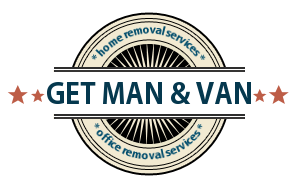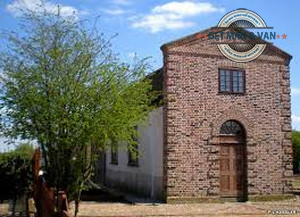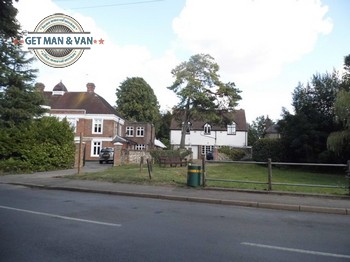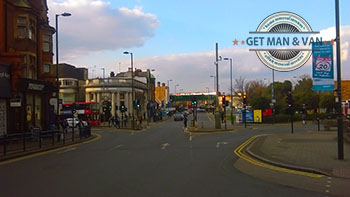
The load space dimensions of commercial vans in professional movers fleets across the UK range from super small vans to large vans, with each van type offering different capacities and features. Understanding the typical load space dimensions for each van type can help you choose the right vehicle for your needs. A crew van is the perfect van for moving larger work teams while still carrying tools and equipment. Whether you have a full house move ahead of you or just need a sofa moved from A to B in London, you need to know what van sizes are available in your area and which one will suit your job. Box vans with their enclosed box shaped load space are great for moving large and bulky items, perfect for removals and furniture delivery. Apart from parking and planning your move, the van size also affects your budget. Small vans are cheaper to hire than large ones so you need to choose the right Luton van carefully.
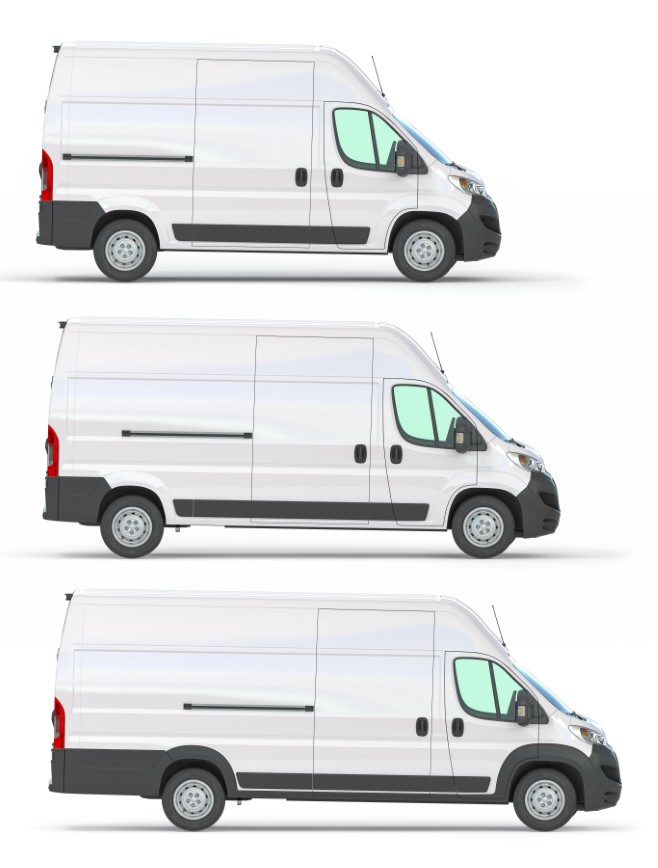


What are the van dimensions?
There are four distinct sizes of vans depending on the typical van’s length and load space dimensions available:
- Luton vans – also known as Giant Vans. The back door opens and can take any size of move due to the massive loading space. These commercial vans that are like trucks are dropside vans meaning they have a ramp at the back that can be lowered to take heavy objects such as sofas, dressers and other bulky items. Box vans, with their enclosed, uniformly box-shaped cargo area, are also a popular choice for businesses needing secure and spacious transport. They are quite high and wide – at least 4 meters in length and 2 meters in width and can take up to 1600kg. Dropside vans feature hinged side and tailboards that allow us as revivalists to do easy loading and unloading, which automatically makes them perfect for trades like construction and landscaping.
- Large vans – also known as Long Wheel Base vans (LWB) are either side loading doors or back loading doors and are the most versatile of moving vans out there. They are up to 3.4 meters in length and 1500kg payload capacity can take large scale moves while their overall dimensions make them easier to get around in traffic and narrow streets than a Luton van. Large vans are perfect for heavier loads, furniture or commercial goods. The Ford Transit, known by many of our colleagues for its versatility, is a popular choice among large vans, offering various models like the Transit Custom and Dropside. The side loading door makes it actually easy to load and unload in confined spaces making them ideal for home moves and business deliveries.
- Medium vans – widely known as Medium Wheel Base vans (MWB) are up to 2.4 meters in length, and 1.7 meters in width and typically come with a height of 1.4 meters. They have a payload capacity of 1200 kg. These panel vans are easy enough to drive even if you don’t have much experience controlling large vehicles and are suitable for moving between one or two-bedroom apartments. Their rear wheels are not that far away from the front ones as in the case of the larger vehicles. That means that Medium Wheel Base vans can take turns easily on narrow or congested streets, and you can find parking space for them more easily. That makes medium sized vans the preferred moving vehicle for Central and Inner London. Panel vans are also highly suitable for various practical uses like moving, deliveries, and storage. Rear doors in these vans facilitate easy access for loading and unloading cargo.
- Small vans – they usually have the dimensions of a large car or your typical pickup truck. Their load space dimensions are up to 1.2 meters in length, less than 1.5 meters in width and usually are no more than 1.2 meters high. Small vans are very easy to drive and can go through any relatively moderate traffic, so if you have no more than 600-900 kg of goods to get transported across the city, they would be the perfect choice for your upcoming relocation project. Additionally, crew vans are ideal for transporting larger work teams while still accommodating tools and equipment, offering versatility with features like removable seats to enhance cargo capacity.

Is my van LWB or MWB?
Not always so easy to tell if you have a Large Wheel Base van or a Medium Wheel Base van. The easiest way to check is to look at the payload area. If it’s over 3 meters long you’ve got a LWB van. MWB vans have a payload area up to 2.5 meters. Law Wheel Base vans often have the much needed tail lifts like Luton vans. The Mercedes-Benz Sprinter is a popular choice for LWB vans due to its massive payload capacity, cargo space and reliability. Medium vans have a big load area but a compact size, perfect for moving personal belongings, furniture and large items.
How much can you fit in a 3.5 ton Luton van?
A 3.5 ton Luton van can fit a lot – 2 double beds, a small sofa (or a big one), many large boxes of goods. People rent Luton box vans when moving multi-bedroom properties because of its large capacity, available in different sizes and convenient for loading and unloading bulky items. For smaller moves a medium sized van might be more suitable, a balance between load capacity and manoeuvrability. The extra storage space and long wheelbase of these vans means you don’t have to make multiple trips to complete your move.
Choose the right size van for your needs so everything fits and the move is efficient.

What’s the size of a 7.5 ton Luton van?
These are huge vehicles, more like commercial trucks than moving vans. This van can fit removal of huge properties and is way above the requirements of a small house or apartment move. Larger vans with more cargo space – up to 15 cubic meters are needed for moving goods and equipment for tradespeople and small businesses. They are suitable for different business needs. Tipper vans, which use a chassis like large panel vans but with an open top bed like a pickup truck, are perfect for moving bulky loads and are a favourite among gardeners and builders.
Can I drive a Luton van on a car license?
A standard drivers license allows you to drive any vehicle up to 3.5 tons. So if the Luton van you’re renting is under 3.5 tons you are legally allowed to drive it. However there is a big difference in how a Luton van handles on the road compared to even a LWB van, let alone a small van or a car. A passenger van, designed to carry more people than a regular car or minivan, can carry between 12 to 15 people and has more comforts and features for group transport needs. Passenger vans are different from commercial vans, offering more comfort and amenities for group travel, making them suitable for shuttles or minibuses. If you’re not confident in your driving skills you might be better off hiring a professional driver from your local removal firm for the job. Or consider van hire options if you don’t want to drive a Luton van yourself.
About the Author:
Prev: « Do Speed Camera Vans Flash? – Everything You Need to Know and What to ExpectNext: When Should You Update Your Vehicle Registration Certificate? »
